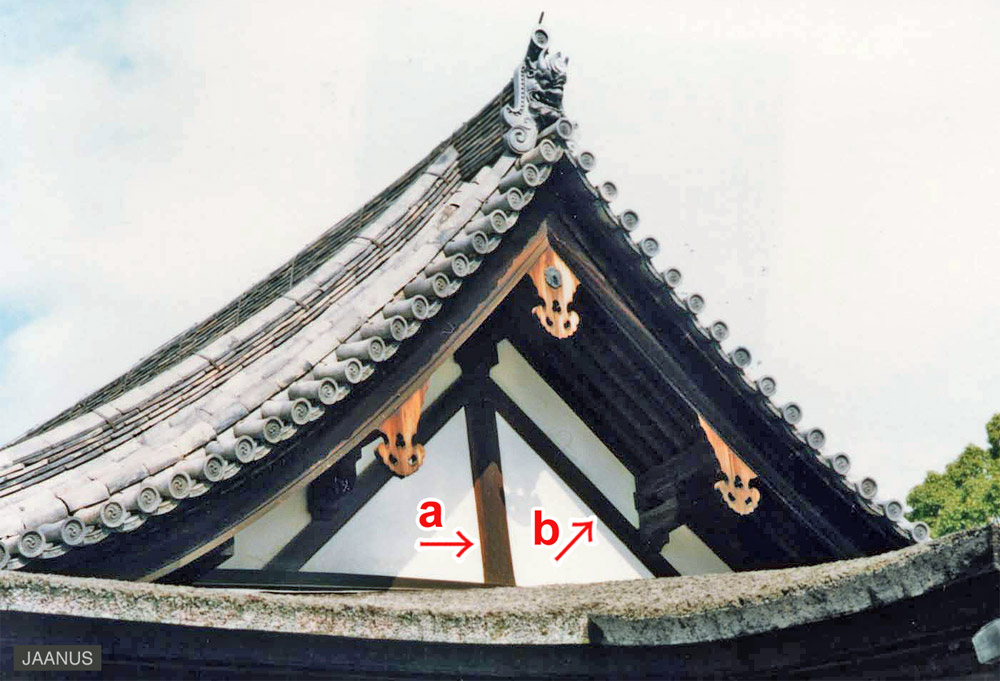|
||
 |
||
Two diagonal struts sasuzao set in such a way that their tops butt against each other with equal force and are secured by a mortise and tenon. In simplest form one inokosasu supports the ridge *mune 棟, at each end. However, with the introduction of Buddhism in the mid-6c, temple architecture, and later Shinto shrine buildings, a center strut *sasuzuka 扠首束, to give further support. This simple framework is placed upon each transverse beam creating one type of roof structure. In turn, each is capped with either a large, single bearing block *daito 大斗, with a boat-shaped bracket arm inserted, or with a bracket arm that has three smaller bearing blocks *mitsudo tokyou 三斗斗きょう to carry the ridgepole *munagi 棟木. Since these structural members appear in the gable pediment *tsuma 妻, they create a decorative pattern *tsumakazari 妻飾 for buildings with gable roofs *kirizuma-zukuri 切妻造 or with hip-and-gable roofs *irimoya-zukuri 入母造. Examples: Toudaiji *Hokkedou 東大寺法華堂 (8c) in Nara, above the ceiling in the oldest end, an inokosasu is used with diagonal braces without a central strut. At Houryuuj *Kondou 法隆寺金堂 (late 7c) in Nara, the inokosasu has diagonal braces with central struts to carry the bracket complexes that support the ridge.
Occasionally the diagonal braces are somewhat curved. Those used on the exposed roof of the Murouji Kondou 室生寺金堂 (8c) in Nara, were curved. The use of inokosasu construction was not confined to temples and shrines but also employed in the roof structures of dwellings.

(C)2001 Japanese Architecture and Art Net Users System. No reproduction or republication without written permission.
掲載のテキスト・写真・イラストなど、全てのコンテンツの無断複製・転載を禁じます。

